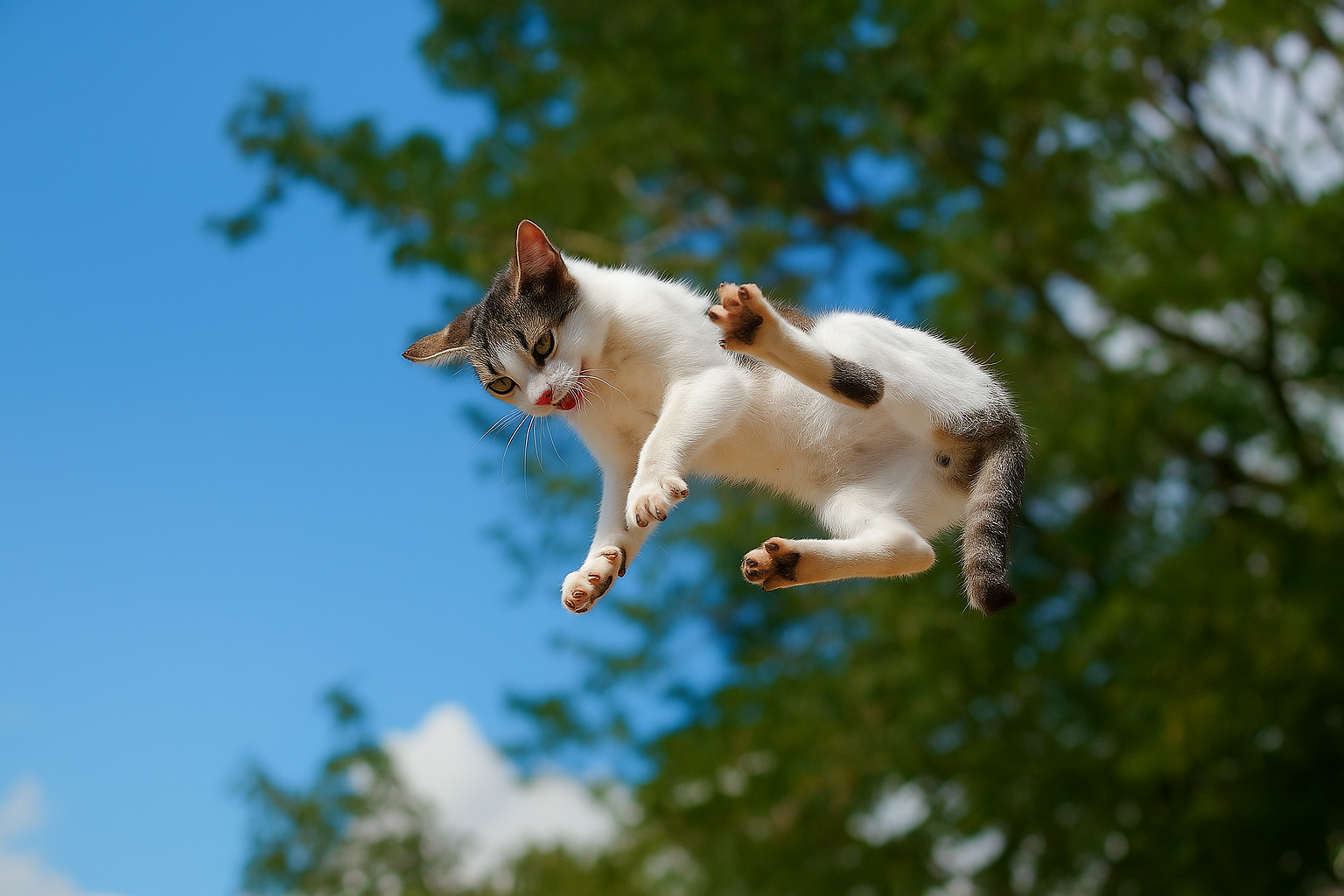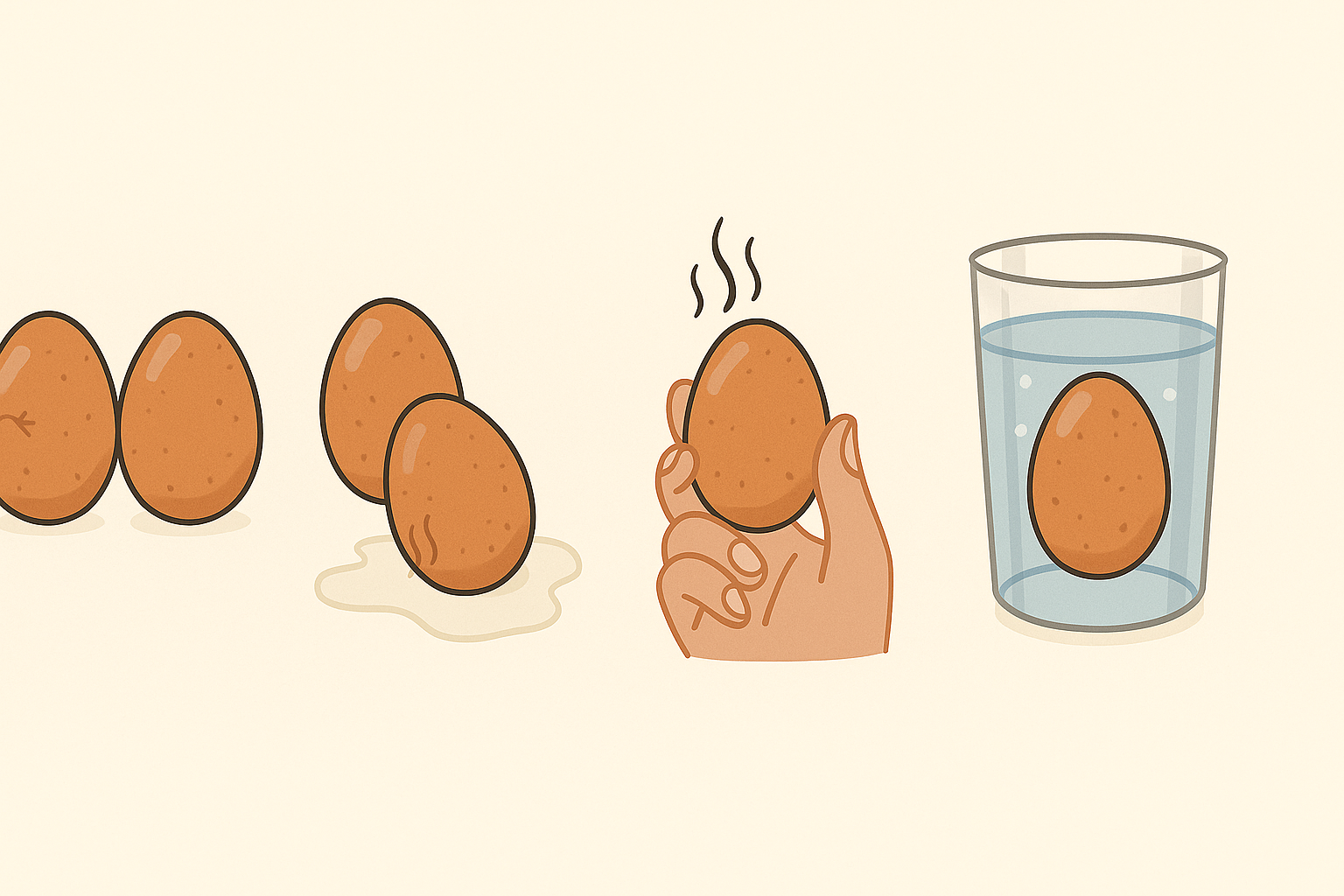What Happens When a Cat Falls?
Cats are famous for their ability to land on their feet during a fall. This phenomenon, known as the “cat righting reflex”, is an instinctive ability that starts to develop in kittens as early as 3 weeks old and is usually perfected by 7 weeks of age.
When a cat falls from a height, it instinctively twists its body mid-air to face downward and land on all four paws. This reflex helps protect their vital organs and reduce the risk of injury.
The Science Behind the Cat Righting Reflex
So how do cats actually do it? Let’s break it down into key steps:
- Head Orientation: The cat first rotates its head to face downward.
- Spinal Twist: The spine then follows, allowing the front half of the body to align with the head.
- Rear-End Adjustment: The back legs follow suit, using inertia and tail movement to balance the body.
- Leg Extension: Just before landing, the cat spreads its legs to increase air resistance and slow the fall.
This sequence usually happens in less than a second and does not require visual input. Cats can do it even blindfolded or in darkness.
Cat Physiology That Helps Them Survive Falls
Cats are uniquely built to survive falls, even from surprisingly high places:
- Flexible Spine: Their spinal column is exceptionally flexible, allowing for rapid body rotation.
- Lack of a Collarbone: Cats don’t have a rigid collarbone, which gives their front legs a greater range of motion during a fall.
- Low Terminal Velocity: A cat reaches a terminal velocity of around 60 mph (compared to a human’s ~120 mph), due to their small size, light bone structure, and ability to spread their body and slow descent.
- Muscular Legs: Strong, shock-absorbing limbs help cushion their landing.
Can a Cat Fall from Any Height?
Contrary to popular belief, cats can get injured from falls — especially from medium-height drops. There’s something called “High-Rise Syndrome,” a term used by veterinarians to describe injuries cats suffer when they fall from buildings.
Falls from Low Heights (1–2 floors)
- Cats may not have enough time to right themselves.
- Higher risk of head, jaw, or spinal injuries.
Falls from Medium Heights (3–6 floors)
- The cat has time to reorient but may still hit the ground too fast.
- Common injuries: fractured legs, broken ribs, internal injuries.
Falls from High Heights (7+ floors)
- Oddly, cats have a better chance of survival here.
- After 7 stories, cats often reach terminal velocity and relax their bodies, which helps reduce injury upon impact.
Important Note: Cats don’t always land unscathed. Even with their agility, they can suffer serious injuries. Always take any fall seriously and see a vet immediately.
Real-Life Examples of Cats Falling
There are many real-life stories of cats surviving incredible falls:
- A cat in New York reportedly survived a fall from the 32nd floor with minor injuries.
- In Boston, a cat fell from the 19th floor and walked away with only bruising.
- During the 2021 Miami football game, a falling cat was caught mid-air by fans using an American flag as a net — proving both their reflexes and the crowd’s quick thinking!
Why Do Cats Fall in the First Place?
Even though cats are graceful climbers and jumpers, they do sometimes fall. Here are common reasons:
- Slippery Surfaces: Windowsills, countertops, or furniture can be slippery.
- Chasing Prey: Cats often get so excited chasing birds or insects that they lose balance.
- Startled Movement: A loud noise or sudden movement can cause a panic jump.
- Health Issues: Elderly or sick cats may suffer from balance issues or poor vision.
How to Prevent Your Cat from Falling
Whether you live in a high-rise apartment or a house, it’s essential to make your environment safer for your cat:
- Secure Windows and Balconies: Install sturdy screens or use pet-proof netting.
- Avoid Open High Spaces: Keep your cat away from ledges, stair railings, and rooftop edges.
- Supervise Outdoor Time: If your cat goes outside, supervise them or use a cat harness.
- Use Perches Inside: Give them safe climbing alternatives like cat trees and shelves.
- Health Checks: Regular vet visits can help catch any physical issues affecting balance or coordination.
What To Do If Your Cat Falls
If your cat takes a tumble:
- Stay Calm: Approach them slowly to avoid scaring them further.
- Check for Injuries: Look for limping, bleeding, swelling, or signs of pain.
- Limit Movement: Don’t let the cat run or jump after a fall.
- Call a Vet Immediately: Even if they seem fine, internal injuries may not be obvious.
Myths and Misunderstandings About Cats Falling
- Myth: Cats always land on their feet.
- Not always. The reflex might not complete in short falls.
- Myth: Cats can’t get hurt in a fall.
- Absolutely false. Many falls cause serious injury or death.
- Myth: Cats are safer on high balconies than dogs.
- Actually, cats are more curious and agile — which makes them more likely to fall.







Leave a Reply